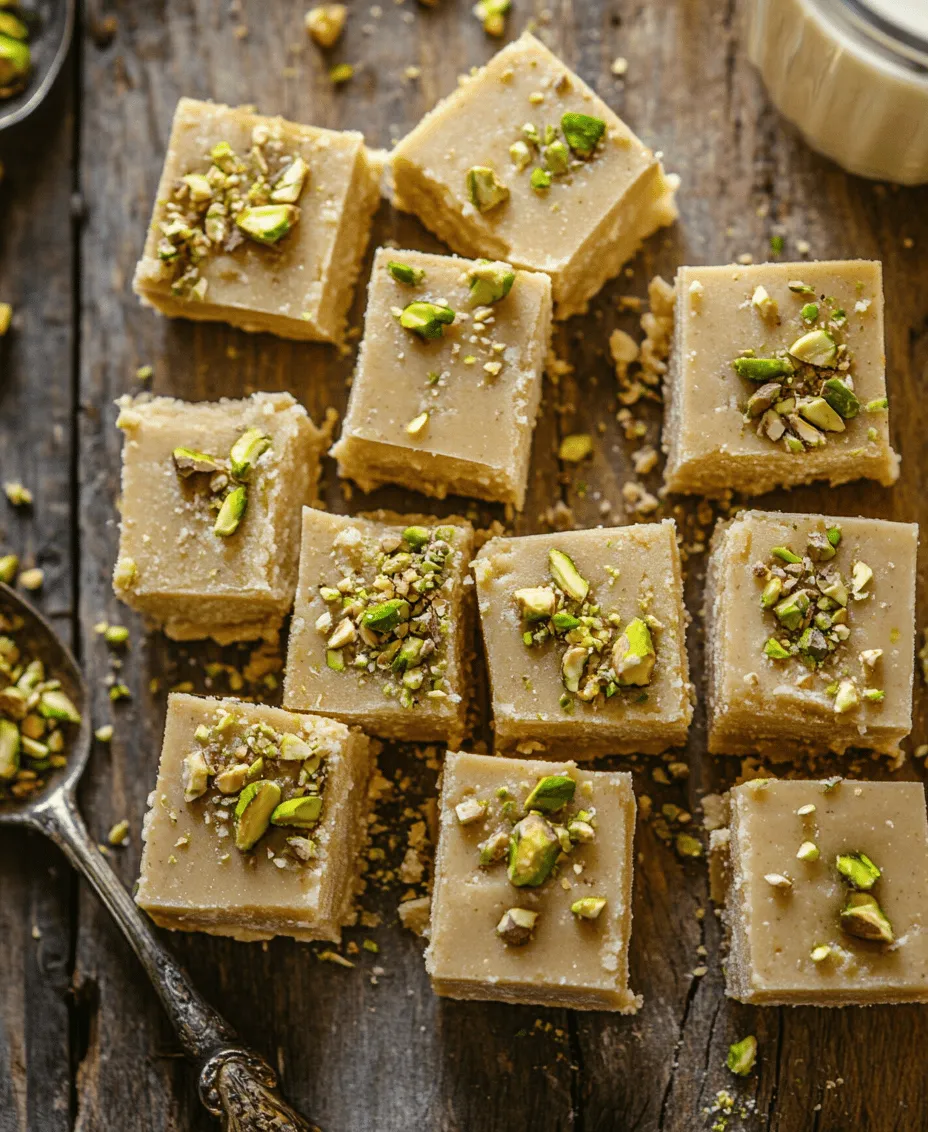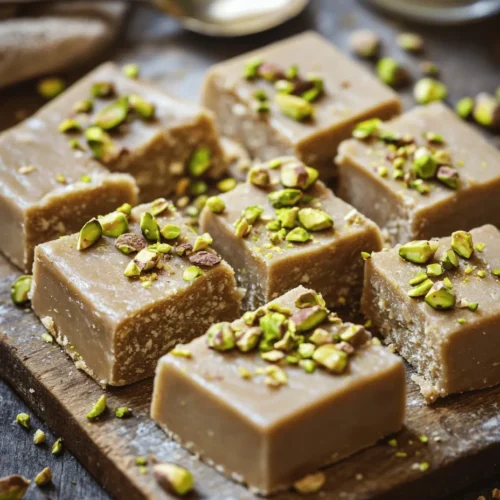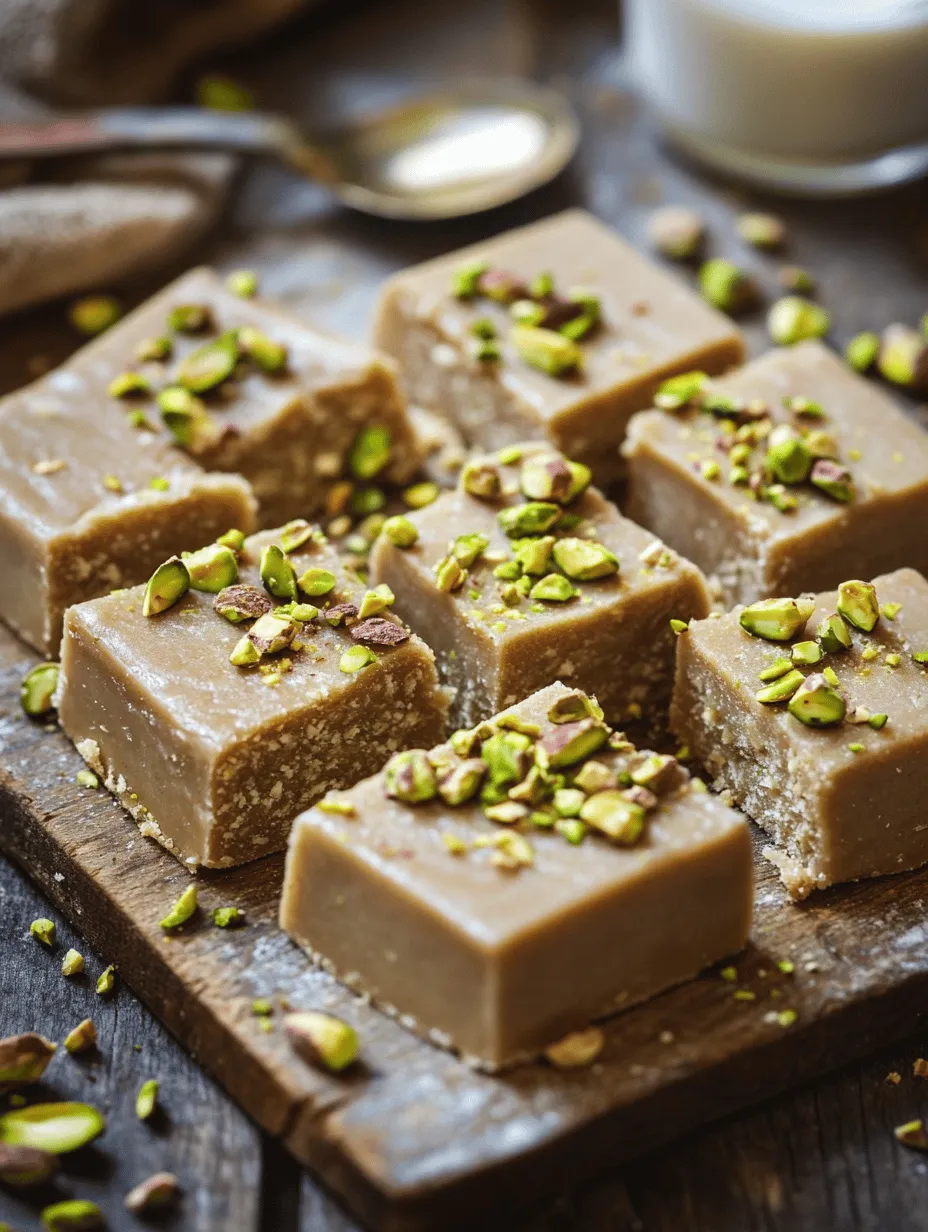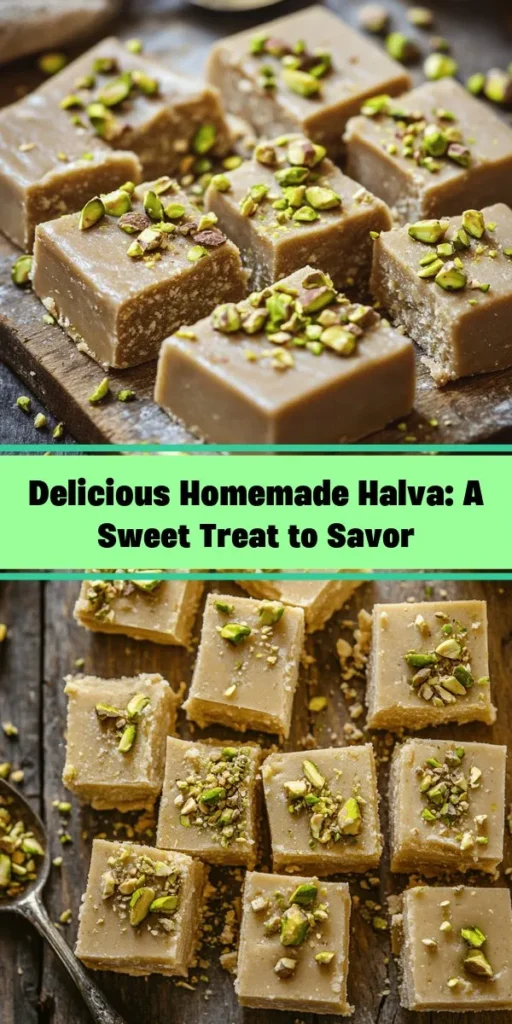Introduction
Halva, a beloved sweet treat found in diverse cultures, holds a special place in the hearts of many. This confectionery, with its rich and nutty flavors, transcends geographical boundaries, captivating palates from the Middle East to the Mediterranean and beyond. Renowned for its unique texture and delightful taste, halva serves as a symbol of hospitality and celebration, making it a staple during festivals, family gatherings, and significant life events.
In Middle Eastern and Mediterranean cuisines, halva is more than just a dessert; it embodies a tradition steeped in history and cultural significance. The origins of halva can be traced back centuries, evolving through time while maintaining its status as a cherished delicacy. What makes this sweet treat even more appealing is its simplicity, particularly in its primary ingredient: tahini. Rich in nutrients and flavor, tahini not only enhances the taste of halva but also offers a range of health benefits, including healthy fats, protein, and essential vitamins.
This article focuses on a traditional halva recipe that celebrates the sweet and nutty flavors characteristic of this classic treat. With its straightforward preparation and wholesome ingredients, making halva at home is an enjoyable culinary adventure that allows you to savor this cultural delight in your kitchen.
Understanding Halva: A Cultural Delight
Halva’s history is as rich and diverse as its flavor. The word “halva” derives from the Arabic word “halwa,” meaning “sweet.” While its exact origins remain a topic of debate, it is widely believed that halva dates back to ancient civilizations in the Middle East, where it was initially made from ground grains and sweeteners. Over time, variations of halva emerged, each reflecting the unique ingredients and culinary traditions of different regions.
In the Middle East, halva is often made with tahini, a paste made from ground sesame seeds, providing a nutty flavor and creamy texture. This version is particularly popular in countries like Turkey, Lebanon, and Israel, where it is frequently enjoyed as a snack or dessert. In contrast, Eastern European variations of halva, such as those found in Greece and Bulgaria, often utilize semolina or flour as a base, resulting in a denser texture. Meanwhile, in India, halva takes on a different form altogether, with sweetened semolina or lentils being combined with ghee and flavored with cardamom.
Halva is not just a treat for everyday enjoyment; it also plays a significant role in various celebrations and special occasions. In many cultures, halva is served during religious holidays, weddings, and communal gatherings, symbolizing unity, joy, and abundance. The act of sharing halva among family and friends fosters a sense of community, making this sweet confection a cherished part of cultural heritage.
From a nutritional perspective, halva provides several health benefits, particularly when made with wholesome ingredients like tahini and nuts. Tahini, the primary base for traditional halva, is packed with nutrients, including healthy fats, protein, and fiber. Additionally, the sesame seeds from which tahini is derived are rich in antioxidants and vitamins, promoting heart health and reducing inflammation. When combined with nuts, such as pistachios, halva becomes an even more nutrient-dense treat, offering a satisfying snack that balances indulgence with nutrition.
Ingredient Breakdown for Traditional Halva
Creating a delicious traditional halva requires a handful of simple yet impactful ingredients. Each component contributes to the overall flavor, texture, and nutritional profile of this beloved sweet.
Tahini
At the heart of traditional halva lies tahini; this creamy paste made from ground sesame seeds is not only a key ingredient but also a health powerhouse. Tahini is rich in monounsaturated fats, which can help lower bad cholesterol levels and support cardiovascular health. Additionally, it provides a good source of plant-based protein, calcium, and essential minerals like magnesium and iron. In halva, tahini adds a distinct nutty flavor and a smooth texture, making it the perfect base for this sweet confection.
Sugar
Sugar is another essential ingredient in halva, as it provides the necessary sweetness that balances the nuttiness of tahini. While granulated white sugar is commonly used, you can also experiment with alternatives such as brown sugar or coconut sugar for a deeper flavor and color. Each type of sugar will affect the texture and sweetness level of the halva, so choose according to your preference. Brown sugar, for instance, can add a slight caramel note, while coconut sugar introduces a more earthy sweetness.
Water
Water plays a crucial role in making the syrup that binds the halva together. When combined with sugar, it creates a sweet syrup that helps achieve the desired consistency. The right balance of water is essential; too little may result in a dry halva, while too much can lead to a runny texture. The goal is to create a syrup that is thick enough to coat the tahini but not so thick that it becomes overly sticky.
Nuts (Pistachios)
Pistachios are a delightful addition to traditional halva, both for their flavor and nutritional value. These vibrant green nuts provide a contrasting crunch to the smoothness of tahini, making each bite an enjoyable experience. Rich in healthy fats, fiber, and antioxidants, pistachios also offer a unique flavor that complements the sweetness of halva. Whether you choose to mix them into the halva or use them as a garnish, pistachios elevate the dish and enhance its visual appeal.
Vanilla Extract
To further enhance the flavor profile of halva, a splash of vanilla extract can be added. This ingredient brings a warm, aromatic quality that rounds out the sweetness and complements the nutty taste of tahini. While vanilla is optional, it can significantly elevate the overall flavor, making your halva even more delightful.
Salt
A pinch of salt might seem like a small addition, but it plays a vital role in balancing the sweetness of halva. Salt enhances the flavors of the other ingredients, making the sweet notes pop while providing a pleasant contrast. It rounds out the taste, ensuring that the halva is not overly sweet, but rather harmoniously flavored. When adding salt, be cautious not to overpower the sweetness; a little goes a long way in achieving the perfect balance.
By combining these six simple ingredients—tahini, sugar, water, pistachios, vanilla extract, and salt—you can create a traditional halva that is both delicious and nutritious. The process of making halva is straightforward, allowing you to enjoy this cultural delight with minimal effort.
In the following sections, we will delve into the step-by-step instructions for crafting your very own traditional halva, guiding you through the process to ensure a successful and satisfying culinary experience. Get ready to indulge in the sweet and nutty flavors of halva, a timeless treat that brings joy to any occasion.

Optional Cardamom: The Aromatic Twist and Its Cultural Significance
Cardamom is a spice that has been cherished in culinary traditions across the globe, and it holds a special place in the preparation of halva. This aromatic addition not only enhances the flavor profile of halva but also carries deep cultural significance. In many Middle Eastern and South Asian cuisines, cardamom is revered for its warm, sweet, and slightly spicy notes. It is often associated with festive occasions and family gatherings, making it a perfect complement to the richness of halva.
Incorporating cardamom into your halva recipe can elevate the dish, adding complexity and a hint of exotic charm. Whether you choose to use ground cardamom or whole pods, this spice is sure to create a delightful sensory experience that resonates with the tradition of sharing sweet treats with loved ones.
Step-by-Step Instructions for Making Halva
Preparing the Pan
The first step in making traditional halva is preparing your pan. It’s crucial to line the bottom and sides of your pan with parchment paper. This simple step ensures easy removal of the halva once it’s set. Choose a square or rectangular pan for the best results, and make sure the parchment paper hangs over the edges slightly; this will act as a handle for lifting the halva out later.
Making the Syrup
Next, it’s time to make the syrup, a key element in achieving the right consistency and texture of your halva. In a saucepan, combine sugar and water, and bring the mixture to a gentle boil over medium heat. Stir occasionally to dissolve the sugar completely. Once boiling, reduce the heat and let it simmer without stirring until it reaches the soft ball stage (approximately 240°F or 115°C on a candy thermometer). This stage is crucial as it ensures that the syrup will cool to a perfect consistency when mixed with tahini.
For those who prefer a hint of complexity, consider adding a splash of lemon juice to the syrup. This not only enhances the flavor but also helps prevent crystallization, ensuring your halva remains smooth and creamy.
Combining Ingredients
Once your syrup is ready, it’s time to combine it with the tahini. In a large mixing bowl, pour the warm syrup over the tahini. Using a wooden spoon or spatula, mix the two ingredients vigorously. It’s essential to achieve a smooth and homogeneous consistency; the warmth of the syrup will help the tahini blend seamlessly. Avoid over-mixing, as this can incorporate too much air and affect the final texture of the halva.
For an added flavor twist, consider incorporating ground cardamom at this stage. Start with a half teaspoon and adjust to your preference, ensuring that the aromatic essence permeates the entire mixture.
Pouring and Setting
Once the tahini and syrup are thoroughly combined, pour the mixture into your prepared pan. Using a spatula, spread the mixture evenly across the pan, pressing down gently to eliminate air pockets and create a compact structure. The goal is to create a smooth surface. Once spread, let it sit at room temperature for about an hour. Afterward, consider pressing it down again with a flat object to ensure it sets firmly.
Cooling and Serving
After the halva has cooled for at least an hour at room temperature, it’s time to transfer it to the refrigerator for a couple of hours to firm up further. This cooling phase is crucial for the halva to set properly, resulting in a sliceable texture. Once fully cooled, use the parchment paper to lift the halva out of the pan. Place it on a cutting board and slice it into squares or rectangles.
When serving halva, it’s best to allow it to come to room temperature for a few minutes before enjoying, as this enhances the flavor and texture.
Tips for Perfecting Your Halva
Common Mistakes to Avoid
Making halva can be a straightforward process, but there are common pitfalls that can affect the final product. One common mistake is not allowing the syrup to reach the correct temperature. If the syrup is too thin, your halva won’t set properly; too thick, and it might become grainy. Use a candy thermometer for the best results.
Another mistake is over-mixing the tahini and syrup. This can lead to a fluffy texture rather than the desired dense and smooth consistency. Mix until just combined, and then pour it into the pan.
Variations to Try
Halva is versatile, and there are countless variations you can explore. Consider adding finely chopped nuts, such as pistachios, almonds, or walnuts, to the mixture for added crunch and flavor. For those with a sweet tooth, incorporating cocoa powder or melted chocolate can transform your halva into a rich chocolatey delight. You can also experiment with flavors by mixing in dried fruits like raisins or apricots.
Storage Tips
To keep your halva fresh and delicious, store it in an airtight container in a cool, dry place. It can last for several weeks if stored properly. For longer preservation, you can refrigerate it, although this may slightly change the texture. If you find that your halva becomes too hard after refrigeration, simply let it sit at room temperature for a while before serving.
Serving Suggestions and Pairings
Ideas for Serving Halva
Halva is a delightful treat on its own, but it can also be paired with a variety of beverages and dishes. Serve it alongside a cup of strong tea or coffee to balance its sweetness. It also makes a beautiful addition to a dessert platter alongside fresh fruits, nuts, or yogurt.
Cultural Pairings and Traditional Accompaniments
In many cultures where halva is enjoyed, it is often served with fresh fruits, such as figs, pomegranates, or citrus slices. The natural acidity of the fruits complements the sweetness of halva, creating a harmonious flavor combination. Yogurt is another traditional accompaniment that adds a creamy texture and balances the sweetness.
Creative Ways to Enjoy Halva in Recipes
Halva’s unique flavor and texture lend themselves well to creative culinary applications. Crumble halva over ice cream for a decadent topping or use it as a filling in pastries and pancakes. It can also be blended into smoothies or used as a sweetener in oatmeal and yogurt bowls.
Conclusion
Making traditional halva at home is not only a rewarding culinary experience but also a way to connect with cultural heritage and create sweet memories. The simplicity of the recipe belies the complex flavors and textures that can be achieved with just a few ingredients. By embracing this process, you not only indulge in a delicious treat but also celebrate the artistry and tradition behind halva.
Encourage your family and friends to join you in this culinary adventure, sharing the joy of creating and enjoying this timeless dessert together. As you slice into your homemade halva, remember that each piece carries with it a story of tradition, love, and the sweet moments shared around the table. Enjoy the rich taste of halva and the connections it fosters, one bite at a time.



